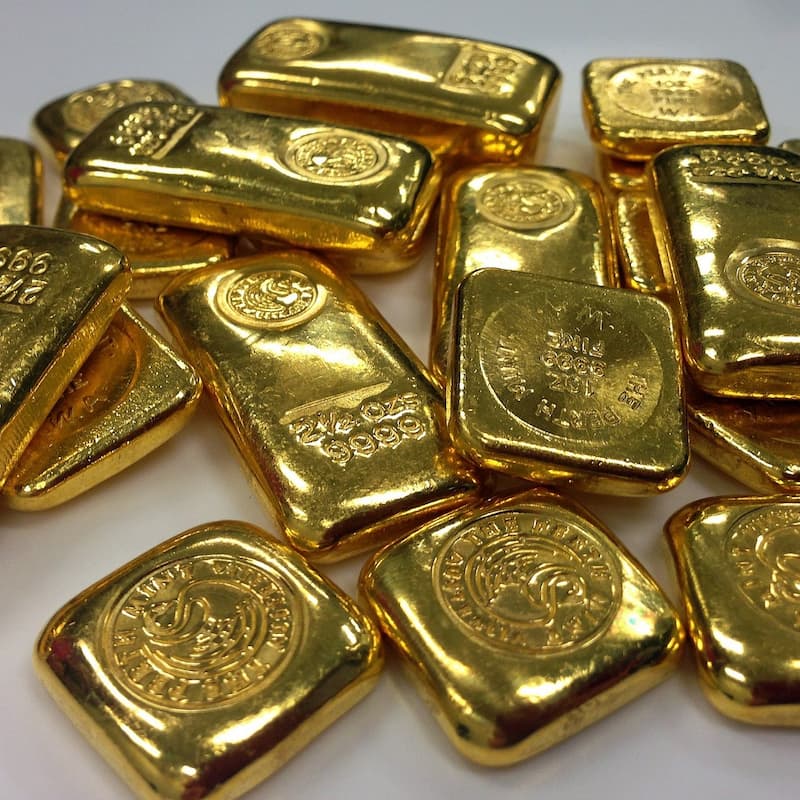Alt Investments
Economic Jitters, US Rate Speculation Lifts Gold To Record – Reactions

Thoughts that the US central bank might ease rates at some point next year, coupled with financial concerns – highlighted by China's sovereign debt downgrade – have given the "safe-haven" metal a boost.
The possibility that the US Federal Reserve might trim interest
rates around mid-2024, coupled with geopolitical and global
financial worries, helped to boost the price of gold to rise over
$2,100 per ounce, up from around $1,800 a year ago.
Gold rose to all-time highs overnight against every major
currency except the Swiss franc.
That said, apart from Asian central banks and Western hedge funds
playing in the yellow metal, the bullish move in gold is not a
“crowded trade,” according to Adrian Ash, director of
research, BullionVault, a UK-based
trading platform for precious metals, in a note yesterday.
“Coin shops are glutted with customers selling, gold-backed ETFs
continue to shrink, and BullionVault users sold 2.5 times as much
gold as they bought as a group over the last seven days,” said
Ash.
Even so, while some profit-taking among existing gold investors
cautions against big rises, conditions suggest that gold has
further upside, Ash said.
The prospect of lower interest rates in the US next year, and
possible dollar weakening, are positive for gold – a fact cited
by Pictet Asset
Management in its recent asset allocation and economic
briefing, as
reported here.
BullionVault’s Ash agrees.
“Underlying direction looks set to keep pointing higher in 2024
as a slower economy sees central banks start cutting interest
rates and geopolitics continues to support bullion prices,” Ash
said.
Jobin Tsui, gold strategist for SPDRs ETFs in Asia-Pacific at
State Street Global Advisors, part of State Street, said the
environment is friendly for gold.
“In our 2024 base case outlook for gold, gold may see a potential
trading range between $1,950/oz and $2,200/oz and our bull case
suggests gold may see a potential trading range between $2,200/oz
and $2,400/oz in 2024,” he said.
“Gold’s trajectory in 2023 surprised many investors as the yellow
metal remained resilient against traditional macroeconomic
headwinds. Gold rallied past a previous all-time high set during
the Covid-19 pandemic on Monday (4 December 2023), driven by
growing expectations that the Fed may need to cut interest rates
in the first half of 2024,” Tsui said. “Last Friday, the US
two-year Treasury yields sank to their lowest level since June as
markets are projecting the possibility of `higher for longer’
lasting through June 2024 down near-zero (2.9 per cent)
probability,” he continued.
“Markets are currently projecting a 43.3 per cent chance of two
25 basis point cuts by June. On the economic front, US
manufacturing activities remained subdued (PMI unchanged at 46.7)
in November, the 13th consecutive month that the PMI stayed below
50; US factory employment declining further as hiring slowed and
layoff increased, while US consumer spending rose moderately in
October. Moreover, the latest annual increase in inflation (PCE
at 3 per cent year-on-year) was the smallest in more than 2.5
years, showing further signs of cooling demand that bolstered
expectations [that] the Fed’s interest rate hiking cycle may be
finally over.
“Global investors will continue to keep a watch on geopolitical
tensions in the Middle East as Israel has resumed its military
operation in Gaza, and latest US jobs data to be released this
coming Friday, with non-farm payrolls expected to rise over
180,000 in November and the unemployment rate to remain at 3.9
per cent; however, stronger-than-expected payroll numbers would
challenge the idea that the Fed is ready to cut rates several
times in the first half of next year.
“Looking ahead to 2024, shifting monetary policy, an economic
slowdown, and elevated volatility may create a positive
environment for gold. Additionally, growing demand from
fundamental factors exogenous to macroeconomic variables should
continue to support gold,” Tsui added.
Economic and financial news continues to highlight gold’s classic
safe-haven status. Yesterday, for example, Moody’s
Investors Service cut its outlook for Chinese sovereign bonds
to negative from stable, highlighting global worries about debt
burdens in the world’s second-largest economy.
